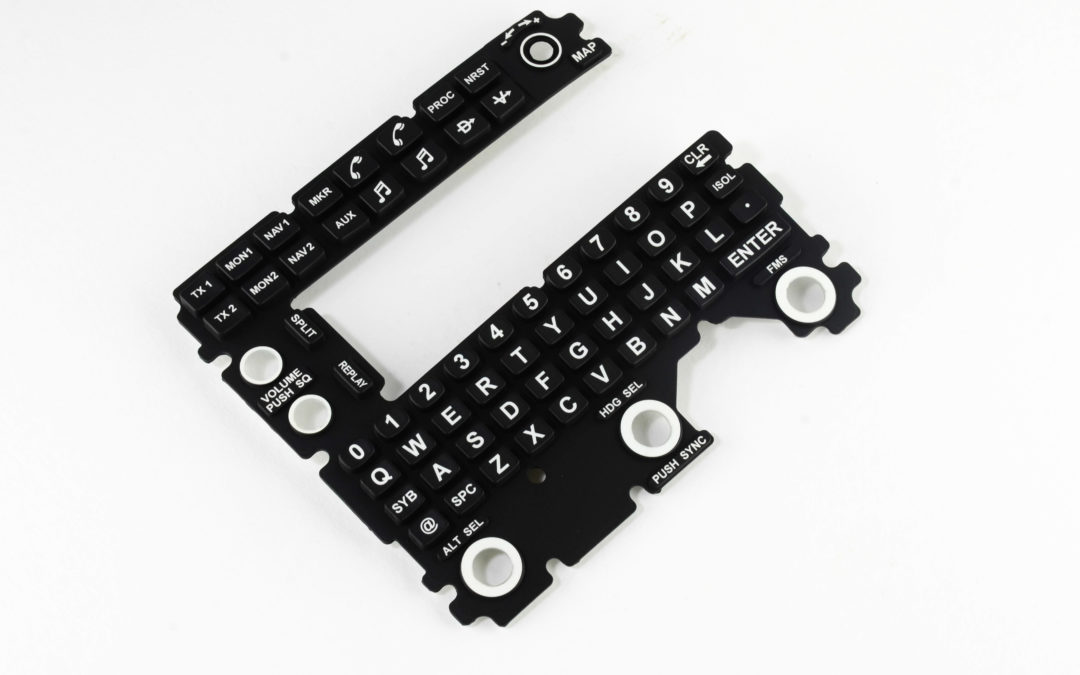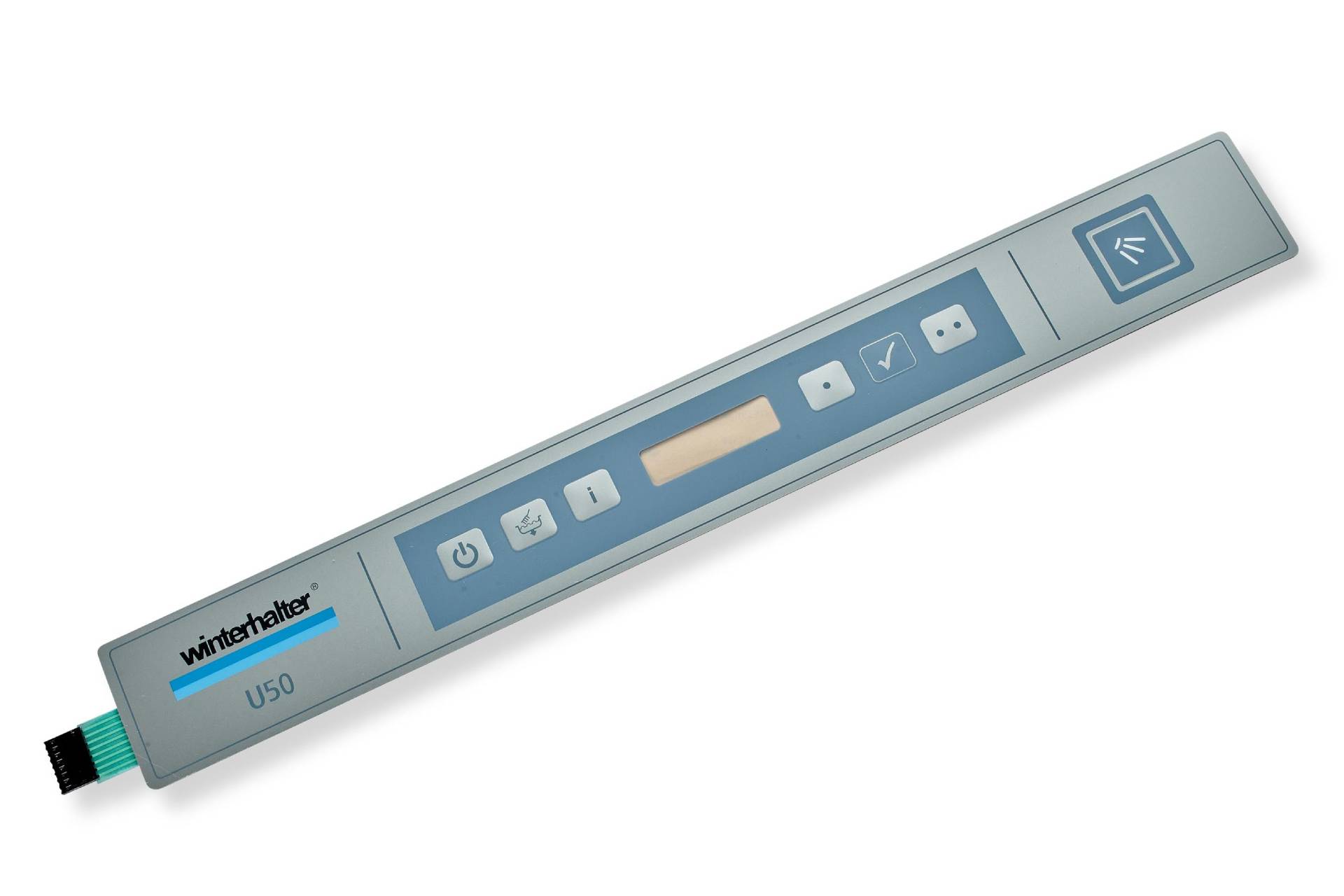How Rubber Keypads enhance device usability through tactile feedback
Finding the Diverse Keys In and utilizes of Rubber Keypads in the Modern Technology Landscape Today
Rubber keypads have developed themselves as important elements in various technological applications. Their flexibility makes them suitable for customer electronic devices, commercial equipments, and clinical gadgets. As these keypads continue to evolve, brand-new modification alternatives and design trends arise. This triggers a more detailed examination of their advantages and manufacturing processes. Comprehending these aspects may disclose why rubber keypads remain a favored selection in the modern technology landscape. What exists in advance for this versatile component?
Summary of Rubber Keypads
Rubber keypads serve as an essential part in various digital gadgets, using a tactile user interface for user interaction. These keypads are usually made from silicone or rubber materials, which offer flexibility and sturdiness. Their design usually integrates elevated letters or icons, boosting use by permitting individuals to really feel the secrets - Rubber Keypads. Rubber keypads are resistant to dirt, dampness, and use, making them suitable for requiring atmospheres
They can be personalized relating to size, color, and shape, permitting suppliers to produce distinct interfaces tailored to particular products. The production process usually entails methods such as molding and printing, making sure top quality result. Consequently, rubber keypads not only boost functionality yet additionally add to the total aesthetic appeals of the device. With these qualities, rubber keypads continue to be a popular choice for both makers and customers, stressing their relevance in the technology landscape.
Typical Applications in Customer Electronic Devices
While numerous electronic gadgets count on touchscreens for customer interaction, rubber keypads remain to play a necessary function in consumer electronics. These keypads are widely used in gadgets such as remotes, gaming controllers, and household home appliances, where responsive responses boosts user experience. Their longevity and resistance to put on make them ideal for gadgets frequently subjected to heavy use.
Rubber keypads are also preferred in portable gizmos and mobile phones, where portable styles require reputable and receptive input methods. The capacity to customize the form and texture of rubber keypads permits manufacturers to develop special styles that attract consumers. Furthermore, the soft touch of rubber gives convenience during extended use, making these keypads a recommended selection for devices calling for extended communication. Overall, rubber keypads continue to be a crucial element in the customer electronics landscape, incorporating performance with easy to use attributes.
Function in Industrial and Medical Equipment
Rubber keypads play a crucial role in both clinical and commercial devices, using toughness and integrity sought after settings. In industrial settings, they are usually used in control panels and machinery, improving driver communication with complex systems. Likewise, in the clinical field, rubber keypads facilitate user-friendly user interfaces for gadgets that require accuracy and health.
Industrial Devices Applications
Keypads play a necessary function in the functionality and individual experience of medical and industrial tools. In industrial setups, rubber keypads offer a durable interface for equipment and control systems, enabling operators to quickly input commands and change setups. Their resistance to dust, wetness, and chemicals assurances dependability under rough problems typical of manufacturing facilities and producing plants. Furthermore, the tactile feedback offered by rubber keypads boosts customer interaction, reducing the possibility of input mistakes. In enhancement to standard machinery, these keypads are integral in automated robotics and systems, where precision is vital. The convenience of rubber keypads in different commercial applications underscores their importance in improving operational performance and guaranteeing safety in complicated atmospheres.
Medical Gadget Assimilation
As clinical gadgets significantly need easy to use interfaces, the integration of rubber keypads has become vital in guaranteeing efficient communication in between healthcare specialists and tools. These keypads supply tactile comments, facilitating user-friendly operation even in high-pressure settings. Their resilience and resistance to rough cleaner make them optimal for clinical setups, where hygiene and long life are crucial. Furthermore, rubber keypads can be tailored to consist of various forms, dimensions, and shades, enhancing visual recognition and availability for users. This flexibility enables the development of specialized controls tailored to certain medical functions, boosting total effectiveness. Consequently, the function of rubber keypads in medical tool assimilation not just improves capability yet also advertises individual safety and functional integrity in medical care atmospheres.
Customization Options and Design Trends

Recent design fads emphasize minimalism and functional designs, focusing on user comfort and user-friendly interaction. Personalized logo designs and branding can be incorporated into keypads, permitting companies to preserve a natural brand identification across their products. Additionally, improvements in producing methods, such as silicone molding, have made it less complicated to attain elaborate layouts and customized formats.
Advantages of Rubber Keypads Over Other Types
Rubber keypads are likewise understood for their durability and resistance to ecological elements. They can endure wetness, temperature level, and dirt fluctuations, making them suitable for outside or commercial setups. Furthermore, rubber keypads are commonly quieter than their plastic or metal equivalents, minimizing sound pollution in common settings.
The cost-effectiveness of rubber keypads makes them an attractive choice for makers. Their lightweight nature adds to reduce delivery prices, while their adjustable styles deal with specific branding requirements. Generally, rubber keypads stand for a trusted and versatile service in the innovation landscape.
Production Techniques for High Quality and Sturdiness
In the visit production of rubber keypads, the option of suitable materials and molding procedures plays an essential duty in figuring out total top quality and resilience. Different molding strategies, such as compression and shot molding, considerably affect the last item's efficiency. Comprehending these factors is essential for attaining ideal cause rubber keypad production.
Molding Processes Explained
A selection of molding procedures play a crucial role in the production of rubber keypads, making certain both top quality and durability. One of the most typical techniques consist of compression molding, transfer molding, and injection molding. Compression molding includes positioning rubber in a warmed mold and mildew, where warm and stress shape it right into the desired form. Transfer molding permits more precise control over material circulation and is appropriate for intricate designs (Rubber Keypads). Injection molding, recognized for its speed and effectiveness, injects liquified rubber right into a mold under high pressure, producing high-volume components with consistent quality. Each technique provides distinct benefits, influencing elements such as production layout, rate, and cost flexibility, eventually influencing the performance and life expectancy of rubber keypads in numerous applications
Material Selection Significance
Material selection plays a necessary duty in the production of rubber keypads, straight influencing their performance and toughness. The choice of rubber compounds, such as silicone or polyurethane, effects tactile responses, resistance to put on, and ecological durability. High-grade materials assure that keypads can hold up against considerable usage, preserving their capability over time. In addition, the formulation of rubber influences its resistance to temperature level fluctuations and direct exposure to chemicals, which are important Web Site for tools in various settings. Using sophisticated manufacturing strategies, such as compression or shot molding, further improves the architectural honesty of keypads. Eventually, mindful product selection and manufacturing processes add significantly to the total top quality, longevity, and customer satisfaction of rubber keypads in today's innovation landscape.
Future Trends in Rubber Keypad Innovation
As innovation proceeds to advance, the future of rubber keypad technology appears promising, with improvements positioned to enhance performance and individual experience. One significant fad is the integration of touch-sensitive modern technology, allowing capacitive feedback that mimics the feeling of typical switches while giving improved responsiveness. In addition, the development of antimicrobial products is likely to obtain grip, dealing with hygiene concerns in shared and public tools.
Furthermore, personalization choices are anticipated to expand, enabling individuals to individualize crucial designs and tactile feedback, consequently providing to varied needs. The consolidation of clever technology, such as connection functions, might additionally emerge, permitting rubber keypads to communicate with various other tools perfectly. As suppliers concentrate on sustainability, environmentally friendly materials are anticipated to become a lot more common, aligning with worldwide environmental objectives. Overall, these fads assure to transform rubber keypads, making them a lot more versatile, straightforward, and eco aware in the technology landscape.
Regularly Asked Questions
Just How Do Rubber Keypads Contrast in Price to Other Keypad Types?
Rubber keypads usually provide a cost-efficient option contrasted to various other keypad types, such as membrane or mechanical alternatives. Their lower production costs and longevity make them an attractive choice for various applications in technology.
What Are the Environmental Influences of Rubber Keypad Manufacturing?

The ecological effects of rubber keypad production include resource exhaustion, power consumption, and contamination from making procedures. Additionally, inappropriate disposal can lead to plastic waste, adding to ecological destruction and damaging communities otherwise managed responsibly.
Can Rubber Keypads Be Used Outdoors?
Rubber keypads can be made use of outdoors because of their durability and resistance to weather elements. Their long life may depend on the top quality of materials made use of and the details ecological conditions they are revealed to.
What Maintenance Is Required for Rubber Keypads?
Rubber keypads need regular cleaning to eliminate dust and particles, regular assessment for wear and tear, and security from severe temperature levels. Making certain correct storage space problems can prolong their lifespan and preserve functionality with time.
How Do Rubber Keypads Perform in Extreme Temperatures?
Rubber keypads usually maintain functionality in severe temperatures, displaying resilience to both heat and cold. Nevertheless, long term direct exposure might cause product deterioration, impacting their tactile feedback and overall efficiency in extreme settings.
Rubber keypads offer as an essential element in different electronic devices, providing a tactile interface for user communication. While lots of digital gadgets rely on touchscreens for customer communication, rubber keypads continue to play an essential function in customer electronic devices. Furthermore, the soft touch of rubber supplies convenience throughout extended use, making these keypads a preferred selection for devices requiring prolonged interaction. In spite of the growing selection of keypad products offered, rubber keypads offer unique advantages that make them a favored choice in numerous applications. Rubber keypads usually offer a cost-efficient option contrasted to various other keypad kinds, such as membrane layer or mechanical choices.